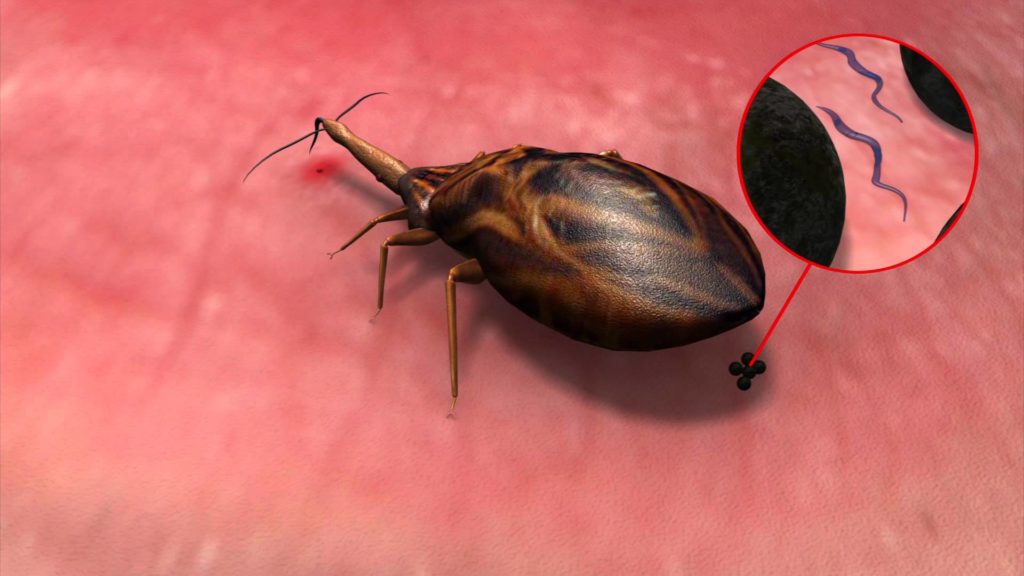CHAGAS DISEASE

WHAT IS CHAGAS DISEASE ?
Chagas disease, also known as American trypanosomiasis, is a disease caused by the parasite Trypanosoma cruzi. It was discovered by the Brazilian doctor Carlos Chagas in 1909. The disease is spread through contact with infected triatomine bugs. The parasite is found in the feces of the bugs and typically penetrates into the human body through the bite of the insects. Triatomine bugs are found in the Southern part of the United States, in Mexico, in Central America and in South America, notably in rural areas where poverty is widespread. Chagas disease can also be transmitted through contaminated blood, food and drinks.
In most of the cases, the symptoms of Chagas disease don’t appear immediately after the contact with an infected bug, but later in the life of the victim. When there are early symptoms, the affected persons experience redness and firm swelling at the site of the bite. Swelling of the eyelid appear a few days (or a few weeks) later. But other symptoms like a fever, body weakness, body aches, headaches, diarrhea, vomiting and skin rash can also occur. Among the people who will develop symptoms later in their life, some may be affected by severe medical conditions, like cardiac diseases and gastrointestinal disorders.
WHAT IS THE RISK FOR TRAVELERS ?
Although Chagas disease is uncommon among travelers, the persons going to Mexico, to South America and to Central America, especially in rural areas, are potentially at risk. The travelers who sleep outdoors or in poorly constructed accommodation face a higher risk of infection with Chagas disease.
HOW TO PREVENT CHAGAS DISEASE ?
There is currently no vaccine or specific drug to prevent Chagas disease. Before your departure for a country at risk, make sure that you are fully covered by a health insurance and that evacuation and repatriation are included in your contract. While traveling, you must protect yourself efficiently against triatomine bugs and prevent their bite.
- Wear protective clothes to cover your skin, such as long pants, long-sleeved shirts and hats.
- Apply insect repellent on exposed skin. Preferably use a repellent offering long lasting protection and containing a high percentage of active ingredients, such as DEET, Picaridin, OLE or IR3535. Note that it is possible to associate sunscreen and repellent, just apply the sunscreen first. Avoid contact with your eyes and with your mouth, and always follow product instructions.
- Use Permethrin-treated clothing and gear. You can buy pre-treated items, or you can apply Permethrin on your personal clothes and equipment (like pants, socks, boots and tents). Always handle Permethrin with caution and avoid direct contact with your skin. Permethrin offers optimal protection against insects, even after several washes.
If you need a blood transfusion in Mexico, in Central America or in South America, go to a good quality and safe medical establishment where the blood supplies are screened, as Chagas disease may be transmitted through contaminated blood.
IF YOU FEEL SICK :
If you feel sick after visiting a country at risk and you think that you may be infected with Chagas disease, consult a doctor immediately. Inform him/her of the places you have visited, of your activities there and of eventual insect bites.
We make every effort to ensure that the information posted on our website is up to date and accurate according to the latest public health recommendations; however, it is impossible for us to make changes on a daily basis.
For the most current travel health recommendations, please call our clinic as make an appointment with one of our travel health professionals.
